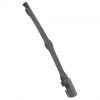aaaaa
Member
The old Bullseye shooters had to, and I mean those were the range rules at the time, hold the hammer back with their thumb. when they dropped the slide. Modern beavertails have made that impossible, but it still can be done with the military grip safety.
Very good info, so holding the hammer down to let the slide slam on an empty chamber is okay? But isn't the hammer cocked and will stay cocked during releasing the slide? So what is the difference? Is there a little additional pullback on the hammer by holding it than just leaving it cocked, and that makes the difference? But doesn't it still beat up the chamber mouth?
I was told by the Armorer on the All Guard team to hold the trigger back on a 1911 when dropping the slide on a loaded round, so I assume the advise is good with an empty chamber. When the trigger is held back the disconnector is engaged and the sear will not be damaged.
I would think that could cause it to fire upon slide drop, no?



